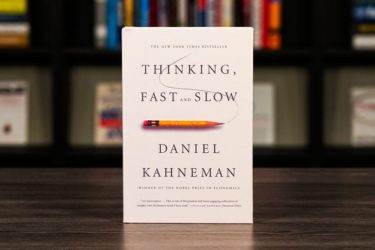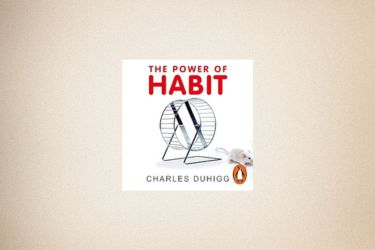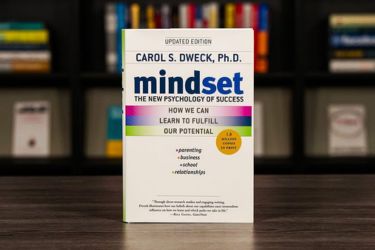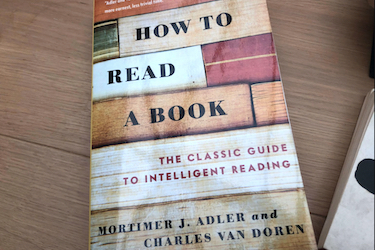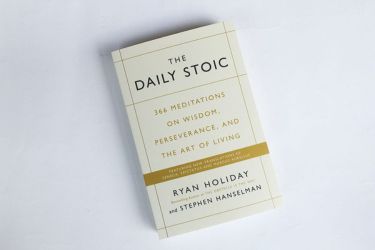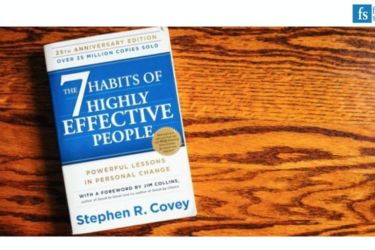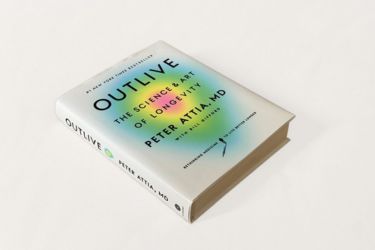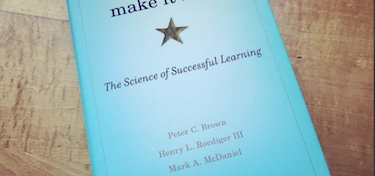Jordan Peterson's "12 Rules for Life: An Antidote to Chaos" became a global phenomenon when it was published in 2018, climbing to the top of bestseller lists and sparking countless debates. The clinical psychologist and University of Toronto professor offers practical guidance for navigating life's complexities through twelve carefully crafted principles. We found ourselves examining a work that blends ancient wisdom with modern psychology, creating a unique approach to personal development.
Peterson's book provides a structured framework for bringing order to chaotic lives by combining psychological insights, philosophical concepts, and practical advice into actionable rules. Each rule serves as both a philosophical exploration and a practical guide, drawing from Peterson's clinical experience and deep knowledge of mythology, religion, and human behaviour. The author's approach challenges readers to take responsibility for their circumstances whilst offering concrete steps for improvement.
We discovered that this book stands out in the self-help genre because it doesn't promise easy solutions or quick fixes. Instead, Peterson presents a rigorous examination of human nature and the importance of discipline, truth, and personal responsibility. The work has attracted both devoted followers and sharp critics, making it one of the most discussed books of recent years.
Key Takeaways
- Peterson combines psychology, philosophy, and mythology to create twelve practical rules for managing life's chaos and uncertainty
- The book emphasises personal responsibility, discipline, and truth-telling as fundamental principles for meaningful living
- Critics and supporters remain divided on Peterson's approach, but the book's popularity demonstrates its significant impact on contemporary self-help literature
Overview of 12 Rules for Life
Jordan Peterson's "12 Rules for Life: An Antidote to Chaos" combines psychology, philosophy, and practical wisdom into a comprehensive guide for modern living. The book draws from Peterson's clinical experience and academic background to address fundamental questions about meaning and responsibility.
About the Author: Jordan Peterson
Jordan Peterson is a clinical psychologist and former professor at the University of Toronto. He spent decades studying human behaviour and treating patients before gaining widespread recognition.
Peterson taught psychology for over 20 years at Harvard University and the University of Toronto. His academic work focused on personality, social psychology, and religious beliefs.
Before writing "12 Rules for Life: An Antidote to Chaos," Peterson published academic papers and his first book, "Maps of Meaning." His clinical practice gave him direct experience helping people overcome personal challenges.
Peterson became internationally known through his lectures and online content. His approach combines scientific research with insights from literature, mythology, and religious texts.
Purpose and Structure of the Book
"12 Rules for Life" aims to help readers create order in their chaotic lives. Peterson presents twelve practical principles that address common human struggles.
Each rule forms a separate chapter with detailed explanations. Peterson uses personal stories, case studies from his clinical work, and examples from history and literature.
The self-help book doesn't offer quick fixes or simple solutions. Instead, Peterson encourages readers to take responsibility for their choices and actions.
The structure moves from personal responsibility to relationships with others. Early rules focus on individual behaviour, while later chapters address social interactions and broader responsibilities.
Key Themes and Concepts
Personal responsibility stands as the book's central theme. Peterson argues that we must take ownership of our lives before trying to change the world.
The concept of chaos versus order appears throughout the text. Peterson suggests that life requires balancing these opposing forces rather than avoiding chaos completely.
Meaning through responsibility represents another core idea. The book proposes that we find purpose by accepting difficult responsibilities rather than pursuing happiness alone.
Peterson emphasises the importance of truth-telling and honest self-examination. He argues that facing difficult truths leads to personal growth and better relationships.
The 12 rules themselves cover practical areas like posture, friendships, child-rearing, and personal goals. Each rule connects to deeper psychological and philosophical principles.
Analysis of Selected Rules
Peterson's twelve rules address fundamental aspects of human behaviour through psychological and philosophical insights. These four rules demonstrate how personal responsibility, physical presence, self-care, and parenting discipline create order from chaos.
Stand Up Straight with Your Shoulders Back
Peterson draws from lobster behaviour to explain dominance hierarchy in humans. When lobsters win fights, their serotonin levels rise, making them stand taller and more confident.
This biological principle applies to humans too. Our posture sends signals about our status and confidence to others and ourselves.
Physical Benefits:
- Better breathing and circulation
- Reduced back pain
- Increased energy levels
Psychological Benefits:
- Higher confidence
- More respect from others
- Better mental health
Peterson argues that adopting confident body language actually changes how we feel inside. When we stand straight, we signal competence to the world.
This creates a positive cycle. Others treat us better, which boosts our confidence further. The rule connects our physical presence to our place in social dominance hierarchy.
Treat Yourself Like Someone You Are Responsible for Helping
Most people take better care of their pets than themselves. We give our dogs medicine but skip our own prescriptions.
Peterson identifies this self-neglect as a major problem. We often believe we don't deserve good treatment, even from ourselves.
Common Examples of Self-Neglect:
- Skipping meals or eating poorly
- Avoiding medical appointments
- Not getting enough sleep
- Staying in harmful situations
The rule asks us to show ourselves the same compassion we'd show a friend. This means making decisions that benefit our future self.
Personal responsibility starts with basic self-care. We cannot help others effectively if we're falling apart ourselves.
Peterson suggests we often know what's good for us but lack the discipline to follow through. Treating ourselves as someone worthy of care changes this pattern.
Set Your House in Perfect Order Before Criticising the World
This rule centres on personal responsibility versus blaming external forces. Peterson uses "clean your room" as a metaphor for getting our own lives sorted first.
The phrase became famous among Peterson's followers. It represents the idea that we should fix our immediate problems before trying to change society.
Steps in Order of Priority:
- Personal habits and health
- Family relationships
- Work and local community
- Broader social issues
Peterson argues that people often focus on big world problems to avoid dealing with their own chaos. Protesting injustice feels easier than changing personal habits.
Cleaning our physical space creates mental order too. A tidy room reflects and promotes clear thinking.
The rule doesn't mean we should ignore all social problems. It means we gain credibility and effectiveness by demonstrating competence in our own lives first.
Do Not Let Your Children Do Anything That Makes You Dislike Them
Peterson challenges modern parenting trends that avoid setting firm boundaries. Children need discipline to develop properly.
Parents who fail to correct bad behaviour harm their children's future relationships. Other people won't tolerate what permissive parents allow.
Key Parenting Principles:
- Set clear rules and consequences
- Be consistent in enforcement
- Distinguish between appropriate and inappropriate behaviour
- Prepare children for social expectations
Children actually want boundaries, even when they test them. Rules provide security and structure in a chaotic world.
Peterson warns that likeable children become likeable adults. Those who never learn social rules struggle throughout life.
The rule requires parents to be uncomfortable sometimes. Discipline means saying no and following through with consequences.
This connects to broader themes of order and chaos. Children need structure to develop into responsible adults who can handle life's challenges.
Philosophical and Psychological Foundations
Peterson builds his 12 rules upon a foundation that combines psychological research with philosophical traditions, drawing from mythology, religious thought, and ancient wisdom to explain human behaviour and the search for meaning.
Order, Chaos, and Meaning
Peterson presents life as a constant balance between order and chaos. Order represents structure, rules, and predictability in our lives. Chaos brings uncertainty, change, and potential danger.
We find meaning when we position ourselves at the boundary between these two forces. Too much order creates stagnation. Too much chaos leads to anxiety and confusion.
Peterson uses this framework to explain human psychology. Our brains evolved to navigate between safety and exploration. We need enough structure to feel secure but enough challenge to grow.
The search for meaning emerges from this tension. When we take responsibility for creating order from chaos, we develop purpose. This concept draws from existentialist philosophy and modern neuroscience.
Peterson argues that meaning comes through voluntary suffering and responsibility. We cannot eliminate chaos from life, but we can choose how to respond to it.
Mythology and Ancient Wisdom
Peterson draws heavily from mythological stories to explain psychological truths. He uses tales from different cultures to show common patterns in human experience.
Biblical stories feature prominently in his analysis. The story of Cain and Abel illustrates jealousy and resentment. Adam and Eve represents the burden of consciousness and choice.
These ancient narratives contain practical wisdom about human nature. Peterson argues that myths survived because they encode important psychological insights. They teach us about universal human struggles.
Joseph Campbell's work on comparative mythology influences Peterson's approach. Campbell identified common themes across cultures that reflect shared human experiences.
Peterson believes these stories offer guidance that pure reason cannot provide. They speak to our emotions and intuitions in ways that scientific facts alone cannot reach.
Religious and Theological Influence
Christian theology shapes much of Peterson's thinking, though he approaches religion through a psychological lens rather than literal belief. He sees religious traditions as repositories of practical wisdom.
The concept of bearing one's cross represents taking responsibility for life's difficulties. This theological idea becomes a psychological principle about accepting hardship as meaningful.
Peterson explores how religious practices developed to address fundamental human needs. Prayer, confession, and community worship serve psychological functions that promote mental health.
He argues that secular society has lost important wisdom by abandoning religious frameworks. We need the moral structure that religious traditions provided, even if we question their supernatural claims.
Peterson's approach blends Jungian psychology with Christian symbolism. He treats religious images as expressions of deep psychological truths rather than historical facts.
Personal Growth and Practical Application
Peterson's framework offers concrete methods for self-improvement through personal accountability and discipline. The book transforms abstract psychological insights into actionable strategies that build resilience and drive meaningful progress.
Self-Improvement and Accountability
Peterson places personal accountability at the centre of genuine self-improvement. We must take full responsibility for our circumstances before we can create meaningful change.
The book challenges us to examine our own behaviour rather than blame external factors. This self-examination process reveals patterns that hold us back from progress.
Key accountability principles include:
- Taking ownership of personal choices and their consequences
- Addressing our own problems before criticising others
- Accepting responsibility for our emotional responses
- Recognising how our actions affect those around us
Peterson argues that self-help begins with honest self-assessment. We cannot improve what we refuse to acknowledge about ourselves.
The psychological insights throughout the book emphasise that lasting personal development requires us to confront uncomfortable truths. This process builds genuine self-awareness rather than superficial motivation.
Building Resilience and Motivation
The rules framework helps us develop resilience through structured thinking and behaviour patterns. Peterson shows how psychological strength comes from facing challenges directly rather than avoiding them.
We build resilience by accepting that suffering is inevitable whilst choosing how we respond to it. This mindset shift transforms obstacles into opportunities for growth.
Resilience-building strategies:
| Approach | Method | Outcome |
|---|---|---|
| Gradual exposure | Face small challenges first | Builds confidence progressively |
| Meaning-making | Find purpose in difficulties | Increases mental fortitude |
| Support systems | Maintain helpful relationships | Provides stability during setbacks |
Motivation emerges naturally when we align our actions with deeper values. Peterson argues that sustainable motivation comes from meaning rather than temporary emotional highs.
The book emphasises that resilience develops through practice. We strengthen our psychological resources by consistently choosing difficult but worthwhile actions.
Role of Discipline in Personal Development
Discipline forms the foundation of Peterson's approach to personal development. We develop self-control through daily practices that build character over time.
The book presents discipline as freedom rather than restriction. When we master ourselves, we gain the ability to pursue meaningful goals effectively.
Discipline manifests through:
- Maintaining consistent daily routines
- Setting and achieving small, measurable goals
- Delaying gratification for long-term benefits
- Taking care of our physical and mental health
Peterson connects discipline to self-respect and dignity. We honour ourselves by keeping commitments we make to ourselves.
The psychological framework shows how discipline creates positive feedback loops. Each disciplined choice makes the next one easier whilst building momentum towards larger objectives.
Regular self-improvement requires structured effort rather than sporadic bursts of activity. Peterson's rules provide this structure through specific, actionable guidelines that support sustained personal growth.
Reception and Critique
Peterson's book sparked intense debate across different communities, from academic circles to social media platforms. The work achieved remarkable commercial success whilst simultaneously drawing sharp criticism from various quarters.
Impact on Readers and Popular Culture
The book became a cultural phenomenon, reaching bestseller status on Amazon and generating millions of discussions online. Peterson's YouTube videos explaining the rules attracted over one million followers, demonstrating the book's broad appeal.
Many readers reported finding practical help with depression and anxiety through Peterson's advice. The clinical psychologist's background lent credibility to his suggestions about improving posture and taking responsibility for one's life.
The book particularly resonated with young men seeking direction. Peterson's emphasis on storytelling and mythological frameworks provided readers with new ways to understand their struggles.
Social media platforms saw countless discussions about the rules. YouTube videos analysing and debating the content proliferated, creating an entire subculture around Peterson's ideas.
Comparisons to Other Self-Help Books
Critics and supporters often contrasted Peterson's work with traditional self-help literature. Unlike typical books promising quick happiness, Peterson's approach demanded serious personal responsibility.
His integration of evolutionary psychology set the work apart from conventional self-help titles. Where other books offer simple solutions, Peterson provided complex philosophical frameworks.
The book's academic depth distinguished it from lighter motivational texts. Peterson's clinical background as a clinical psychologist gave his advice more weight than celebrity-authored self-help books.
Some readers appreciated this complexity whilst others found it unnecessarily dense for a self-help guide.
Criticisms and Controversies
The book faced significant academic criticism, particularly from colleagues who questioned Peterson's interpretations of psychological research. Critics argued his evolutionary explanations oversimplified complex human behaviours.
Prominent intellectuals like Sam Harris engaged in public debates with Peterson, challenging his philosophical positions. These discussions highlighted disagreements about religion, truth, and freedom.
Some reviewers criticised the book's political undertones, arguing Peterson's emphasis on traditional hierarchies conflicted with progressive values. Critics worried his advice might discourage social change.
Mental health professionals questioned whether Peterson's approach was suitable for people with serious depression or anxiety. They argued clinical issues required professional treatment rather than self-help rules.
Frequently Asked Questions
Readers often want chapter-by-chapter breakdowns and quick summaries of Peterson's principles. Many also seek comprehensive reviews, legal access options, critical reception details, and comparisons with his other works.
What is a summary of each chapter in '12 Rules for Life'?
Chapter 1 focuses on standing up straight with proper posture as a foundation for confidence. Chapter 2 encourages treating yourself with the same care you'd show a beloved pet.
Chapter 3 emphasises choosing friends who genuinely want the best for you. Chapter 4 advises comparing yourself to who you were yesterday, not to others today.
Chapter 5 discusses proper parenting and not letting children do things that make you dislike them. Chapter 6 suggests setting your house in perfect order before criticising the world.
Chapter 7 focuses on pursuing what is meaningful rather than what is expedient. Chapter 8 warns against lying, particularly to yourself.
Chapter 9 advises listening to others as if they might know something you don't. Chapter 10 emphasises speaking precisely and clearly.
Chapter 11 encourages not bothering children when they're skateboarding (allowing reasonable risk-taking). Chapter 12 suggests showing appreciation when you encounter a cat on the street.
Can one summarise the principles outlined in '12 Rules for Life' by Jordan Peterson?
Peterson's principles centre on taking personal responsibility and creating order in your life. The rules emphasise self-improvement, honest communication, and meaningful relationships.
The book argues that standing up straight builds confidence whilst treating yourself well improves self-care. Choosing supportive friends and comparing yourself only to your past self promotes healthy growth.
Proper parenting, meaningful pursuits, and truthful living create stability. Listening carefully, speaking precisely, and allowing reasonable risks foster better relationships and personal development.
Where might I find a comprehensive review of '12 Rules for Life'?
Major publications like The Guardian, The Times, and BBC have published detailed reviews of Peterson's book. Academic journals in psychology and philosophy also offer scholarly analyses.
Online platforms such as Goodreads feature thousands of reader reviews with varied perspectives. Book review websites like Kirkus Reviews and Publishers Weekly provide professional critiques.
YouTube channels dedicated to book reviews often feature lengthy discussions about the book's content and impact. Literary magazines and university publications frequently examine Peterson's arguments in depth.
Is there a way to legally access '12 Rules for Life' in PDF or audiobook format for free?
Your local library likely offers free access through digital platforms like OverDrive or BorrowBox. Many libraries provide audiobook lending services at no cost to cardholders.
Some libraries participate in inter-library loan programmes if your local branch doesn't stock the book. University libraries often allow community access to their digital collections.
Free trial periods from Audible, Kindle Unlimited, or Scribd sometimes include Peterson's book. However, permanent free PDF downloads from unofficial sources violate copyright laws.
How has '12 Rules for Life' by Jordan Peterson been received by critics?
Critics have offered mixed responses to Peterson's work, with some praising his practical advice and psychological insights. Others criticise his political views and controversial statements outside the book.
Professional reviewers often acknowledge the book's popularity whilst questioning some of Peterson's broader claims. The book became a bestseller on Amazon and gained significant mainstream attention.
Academic critics sometimes fault Peterson for oversimplifying complex psychological and philosophical concepts. However, many readers find his advice helpful for personal development and life organisation.
What other books has Jordan Peterson written, and how do they compare to '12 Rules for Life'?
Peterson's follow-up book, 'Beyond Order: 12 More Rules for Life', continues themes from the original whilst addressing more complex psychological territory. This sequel focuses on balancing order with necessary chaos.
His earlier academic work, 'Maps of Meaning', presents dense theoretical psychology and mythology analysis. This book requires more academic background than his popular self-help works.
'Beyond Order' received less mainstream attention than '12 Rules for Life' but maintains Peterson's blend of psychology, philosophy, and practical advice. Both books share similar writing styles and mythological references.


